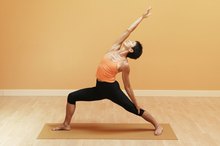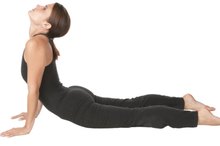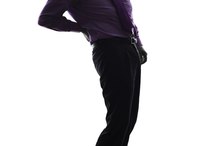What does fact checked mean?
At Healthfully, we strive to deliver objective content that is accurate and up-to-date. Our team periodically reviews articles in order to ensure content quality. The sources cited below consist of evidence from peer-reviewed journals, prominent medical organizations, academic associations, and government data.
- U.S. National Institutes of Health: Use of McKenzie cervical protocol in the treatment of radicular neck pain in a machine operator
- U.S. National Institutes of Health: Use of McKenzie cervical protocol in the treatment of radicular neck pain in a machine operator
The information contained on this site is for informational purposes only, and should not be used as a substitute for the advice of a professional health care provider. Please check with the appropriate physician regarding health questions and concerns. Although we strive to deliver accurate and up-to-date information, no guarantee to that effect is made.
McKenzie Exercises for the Neck
The McKenzie rehabilitation method is a physical therapy methodology that teaches patients exercises to help manage pain that originates in the spine, according to Wellness.com. It is also effective at treating chronic neck pain that is caused by long-term force in one direction by helping to restore range of motion in your neck. You should always check with your doctor before starting any rehabilitative exercise program.
If you are experiencing serious medical symptoms, seek emergency treatment immediately.
Lying Neck Stretch
This exercise is performed while lying on your stomach and can be effective at helping alleviate neck pain caused by stiffness. Lie down on your stomach with both arms relaxed at your sides and your head turned to one side. Relax and allow your body weight to stretch your neck in the direction your head is turned. Steps Physiotherapy recommends you hold this position for five to 10 minutes and perform this exercise several times throughout the day.
- This exercise is performed while lying on your stomach and can be effective at helping alleviate neck pain caused by stiffness.
- Relax and allow your body weight to stretch your neck in the direction your head is turned.
Chin Tuck
Arnold-Chiari Syndrome Exercises
Learn More
The McKenzie chin tuck, or head retraction, can be performed either from a sitting or standing position and can help lengthen the upper spine, according to Dr. Shane Mangrum 1. It is performed by keeping your eyes focused on something in front of your and pulling your head back toward your shoulders, while keeping your head as stationary as possible. On the website, BackExerciseDoctor.com, Mangrum suggests you perform the chin tuck multiple times daily to help alleviate neck pain.
Neck Mobility Exercises
These exercises can be performed from either a standing or sitting position, and include range of motion activities for your neck. Stand or sit with your mouth closed and your eyes facing forward. Begin by moving your neck to one side with your eyes still facing forward and hold this movement as prescribed by your doctor. Repeat on the other side. Follow these exercises by turning your head slowly to one side, then the other, using slow and controlled motions. Repeat these exercises as directed by your physician.
- These exercises can be performed from either a standing or sitting position, and include range of motion activities for your neck.
- Follow these exercises by turning your head slowly to one side, then the other, using slow and controlled motions.
Related Articles
References
- StopYourPain.com: Head Retraction
- U.S. National Institutes of Health: Use of McKenzie cervical protocol in the treatment of radicular neck pain in a machine operator
- North American Spine Society. Cervical exercise: the backbone of spine treatment. Updated 2012.
- Cleveland Clinic. Could your neck pain actually be neck arthritis? Updated April 30, 2019.
- Harvard Medical School Harvard Health Publishing. Neck pain: core exercises can help. Updated February 2015.
Resources
Writer Bio
Keith Strange spent more than a decade as a staff writer for newspapers in the southeastern United States, winning numerous awards for his work. He has a B.S. in wellness/sports medicine from Averett University and completed graduate work in exercise physiology. Strange is a former competitive martial artist and holds a third-degree black belt in tae kwon do.









